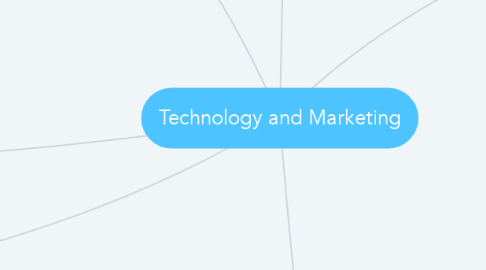
1. Increase consumer and societal trust
2. Digital Innovation
2.1. Digital transformation
2.1.1. The process of using digital technology to create new or modify existing business processes, culture, and customer experience to meet developing business and market needs.
2.2. Influencer marketing
2.2.1. certain brands collaborating with the influencers to market their products or services through different media platforms like Youtube, Facebook, Instagram, etc.
2.3. Voice search
2.3.1. a speech recognition technology that allows users to search by speaking words aloud instead of entering them in the search field like Siri and Google voice search.
3. Fourth Industrial Resolution
3.1. Marketing communication tools and practices need to be reviewed to actively to create the power and influence of products, services, and brands through social media and digital marketing.
3.1.1. Digital marketing refers to the use of digital technologies to market products and services.
3.1.1.1. Example: Internet, mobile phones, display advertising on some websites and other digital media.
3.1.2. Social media refers to mobile applications; it gives us the ability to show our unique character, lifestyle, family, good and bad experiences. In short, it offers us with the necessary platform to promote and market the brands, products and services for free.
3.1.2.1. Example A: certain companies or brands will be using social media like Instagram or Facebook to market and promote their products and services.
3.1.2.2. Example B: Use for entertainment purpose. Most of them now use social media not just for searching additional knowledge, but also playing mobile games, listen to music, watch movie or drama, online shopping and others.
3.2. Shaping the future
4. 5W
4.1. Who
4.1.1. Nearly everyone (86%)
4.2. What
4.2.1. DI: digitise internal operations to do things better, faster, cheaper; find new ways to engage users; bring new products and services to market
4.2.2. IR 4.0: a new era that builds and extends the impact of digitisation.
4.3. When
4.3.1. Before 1900
4.3.1.1. Letter
4.3.1.2. Telegraph
4.3.1.3. Pneumatic mail
4.3.2. 20 century
4.3.2.1. magazine
4.3.2.2. newspaper
4.3.2.3. television
4.3.2.4. super computer
4.3.3. present
4.3.3.1. Facebook
4.3.3.2. Twitter
4.3.3.3. Spotify
4.3.4. future
4.3.4.1. VR & AR
4.3.4.2. Chatbots
4.4. Where
4.4.1. Worldwide
4.5. Why
4.5.1. Power of predict and mitigate failure
5. effect
5.1. Positive
5.1.1. For Marketers
5.1.1.1. Enhances Customer Data to increase personalized marketing
5.1.1.1.1. Information, such as demographic and psychographic data, is collected and used by software such as social media analytics tools. This data can help marketers create a more personalized strategy –– one that target audiences can identify with.
5.1.1.2. Data systems assist with streamlined processing and Saves Money, and Costs Money
5.1.1.2.1. The rise of AI means that you can make the data collection portion of your job easier. Tools powered by the Fourth Industrial Revolution can keep you from spending a significant portion of your time trying to find ROI in social media strategy. Social media analytics tools tell you the rate at which your brand is engaging with customers. Digital advertising tools provide real-time data on the impact of the ads you put out. All this can be done by machines in a fraction of the time it would usually take to collect and interpret that data manually -- time you can spend doing other things.
5.1.2. Increase human productivity
5.1.3. Product enhancement and improve customers experience
5.1.3.1. Customers will using social media like Instagram and Facebook for online shopping, they will give review after purchase. Therefore, marketers can improve product and service based on the review that the customers given.
5.2. Negative
5.2.1. Cyber security
5.2.2. Becoming overly dependent on social media
5.2.2.1. should not take it as the only marketing avenue, becoming dependent on certain social media platforms leaves you vulnerable to future changes that might be made to how the sites.
5.2.3. Raises Privacy Concerns
5.2.4. Increased customer power
5.2.4.1. Customers are always quick to post negative experiences and their dissatisfaction towards a particular company without considering the possible impact that it would create to the business.
